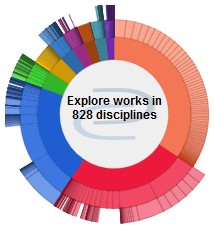Graduate Program
Biological Sciences
Degree Name
Master of Science (MS)
Semester of Degree Completion
2013
Thesis Director
Jeffrey R. Laursen
Thesis Committee Member
Robert E. Colombo
Thesis Committee Member
Scott J. Meiners
Abstract
Although the majority of introduced non-native species fail to establish, proliferate and spread to the point of causing observable damage, there are a significant minority that achieve biological successes far beyond what they do in their native ranges. Parasites and pathogens are theorized to play an important role in determining the outcome of invasions by non-native species, both as potential mediators of the population growth of invasive species and as invasive species themselves. This study examines and compares the abundance and species richness of digestive tract helminths in native and non-native fish of the lower Wabash River, a single waterpool over 600 kilometers in length. Two species of non-native carp, the silver carp (Hypopthalmichthys molitix) and the common carp (Cyprinus carpio), as well as four species of ecologically and taxonomically similar native fish, gizzard shad (Dorosoma cepedianum), freshwater drum (Aplodinotus grunniens), quillback carpsucker (Carpiodes cyprinus), and river shiner (Notropis blennius) were dissected to search for invasive parasites, evaluate the potential for the invasive carp to be experiencing an enemy release, and assess the impact of these invasive fish on the population dynamics of the overall community of fish parasites. An additional 29 silver carp were also dissected from the Illinois River, as part of a further search for parasites of these recently introduced fish. No intestinal parasites whatsoever were found in the 82 silver carp that were dissected, although several enteric helminthes were found in gizzard shad, a trophic competitor of silver carp. Common carp were found to be infected with a single species of nematode, although infection at relatively low prevalence, intensity and abundance. Both species of carp had lower rates of parasitism than reported from regions in which they have been established longer. Overall, the results are consistent with enemy release in silver carp, at both the geographic and community levels. The results for common carp were more ambiguous but did not rule out the potential for enemy release.
Recommended Citation
Wilcox, Justin, "Parasites of Invasive Carp and Native Fish in the Wabash River" (2013). Masters Theses. 1114.
https://thekeep.eiu.edu/theses/1114




